Sharpening a knife is the basic preparation for cooking. And, If you have the Best Japanese Chef Knives, there is no problem cooking, but sharpening still takes a bit of effort.
Whatever, is your best knife also not sharpened when you cook? It’s so dangerous as you are likely to miss your target and even cut your finger as it may cause a bit of slip. Better you should fix it before going to your kitchen.
Now, the best method to sharpen your knives is obviously through sharpeners or whetstones. If you have already got one, sharpening even your blunt knife is not a big deal anymore.
However, if you are unable to manage one, you should not worry as we will tell you some effective ways to sharpen a knife without a sharpener. So, Let’s dive into the best sharpening methods without a sharpener.
07 Ways to Sharpen a Knife Without a Sharpener | Tools Of Chef
1. Another knife
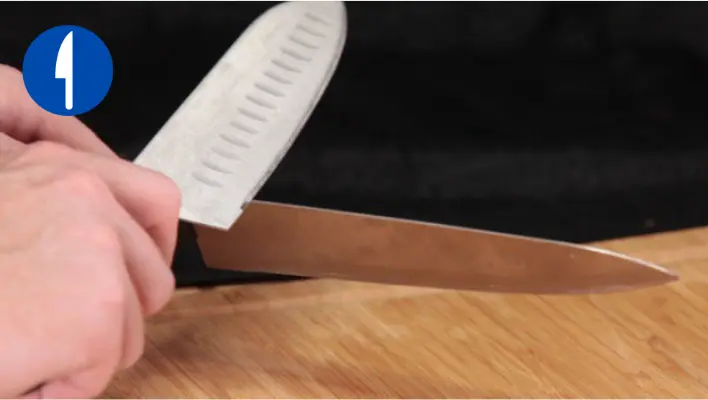
If you have got a couple of knives in your kitchen then you should skip everything and just focus on this specific method. There is no better way to sharpen a knife without a sharpener other than an idle knife. You just need to pick a knife of almost the same dimensions (it is not necessary by the way) and this would give you a sharp knife in the end. Now, that knife could be both sharpened or blunt but not the chipped one. Otherwise, the chipped edge may damage your real knife.
The bent blade still works, but better avoid chipped knives. So, here is the deal! If you have ever sharpened your knife with a honing rod, you will surely get your knife sharpened. What you have to do is to hold your other knife just like a honing rod and start honing your actual knife with that.
You can either use its blade side if it’s not seriously chipped, or you can even use the spine part of that knife if it’s thick enough to bear the pressure of the second knife. The only care you need is to move your hands forward from your body so you can’t injure yourself with either knife. Also, don’t move your knives so fast that you risk your own finger. Just do it smoothly like on a pattern of a sharpener.
2. A Mug of Coffee
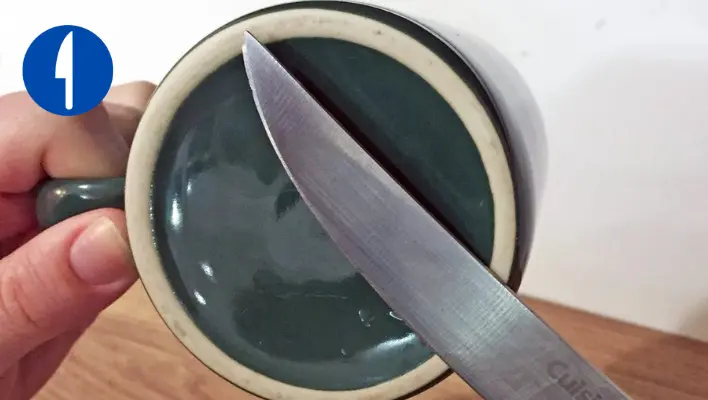
Yes, guys, we are serious. A mug of coffee can do a lot of magic other than just putting in a cappuccino. There is a Mug for coffee every morning that you can use to sharpen your knife. Here’s why and how you should do that!
It is known that the back of the mug has a rough finish that doesn’t slip but the rest of the cup does. The back may work similarly to a Whetstone if you are smart enough. Now, you simply have to put your mug upside down on an even surface so you can effectively move both your hands and mugs. Try making and maintaining an angle of 10 to 15° to form a better and sharp angle.
Now, start putting things into motion and start by slowly moving your knife in progressive/forward strokes and then lift your knife backward to put another stroke. If you do both forward and backward motion in a simple stroke, you won’t get enough sharpness. Nor should you flip the knife after every single stroke.
Instead, do a couple of strokes on one side without honing backward but forward. Repeat this step until you feel your one side sharpened. Once it is done, it’s now time to flip your knife and prepare the other side. You can also use the back of a ceramic plate instead of Mug if you can’t find one.
3. Glass Jar
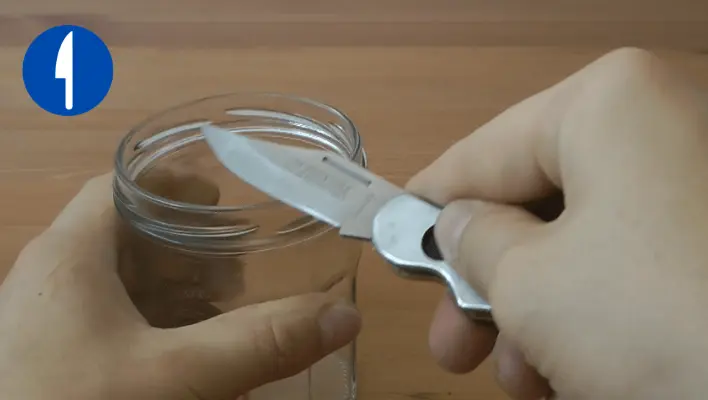
You can see glass jars after drinking juice. It is useful to sharpen a knife. There is a screw on the top of the jar. Sticky left side to screw and slide for at least 10 times and then do the same thing for the right side. The particles in the glass sharpen the roughened blade.
It is almost similar to a mug of coffee. However, in any case, you should avoid putting too much pressure because it may either break your mug or jar and can also break your blade, especially if it’s carbon steel.
4. Foil | how to sharpen a knife without a sharpener
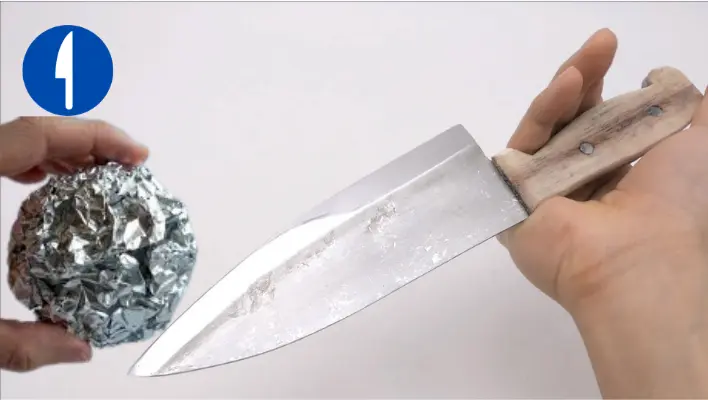
Make a ball with the foil to remove the glossy treated part. Then, if there is a situation where food needs to be stored or packaged, should it be used separately from the front and back of the cooking foil? In conclusion, it is not necessary to use them separately.
Depending on the occasion, you can use it in a way that is convenient for you, but if you have to distinguish it, it is recommended to use the glossy-treated part of the foil from the front and back in contact with the food.
This is because, due to the nature of the aluminum, small holes can form in the matte-treated parts, and this can cause the thin oxide film on the aluminum to be absorbed into the holes due to food ingredients, causing the foil to turn black.
Anyway, the blade of the knife becomes sharp due to friction between the foil and the knife. Not only that but if you wrap the blades of the knife with foil after grinding. It can prevent rust from forming.
5. File or Sand your Knife
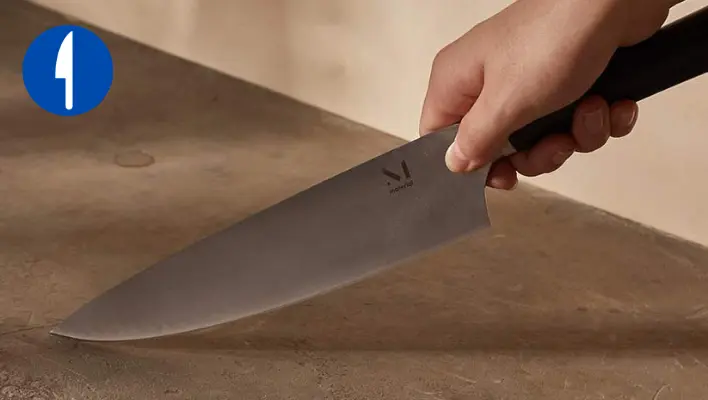
There is a clear difference between steel or a nail file and an actual sharpener itself. The file can be used for different tasks but a sharpener is meant just for sharpening your knives. So, filing your knife is the second-best method to sharpen your knife without a sharpener. But, this isn’t very simple for many of us.
Find a flat surface and position the rough side of your knife towards your face. You are going to maintain an angle of 10 to 15° again as it would bring the best sharpness to your blades. Now, just imagine that file as a real sharpener and start dragging your knife on its surface across the full length of your blade.
If you can manage to keep the same angle, you are likely to get a good accuracy throughout your blade that would help you in cutting the ingredients precisely. Whether you are using sandpaper or a file, this trick will indeed work. However, in case you are using sandpaper, you would need to fold that paper for a better grip and decent workability. Just repeat a couple of strokes and that’s it!
6. Round or Flat Rocks
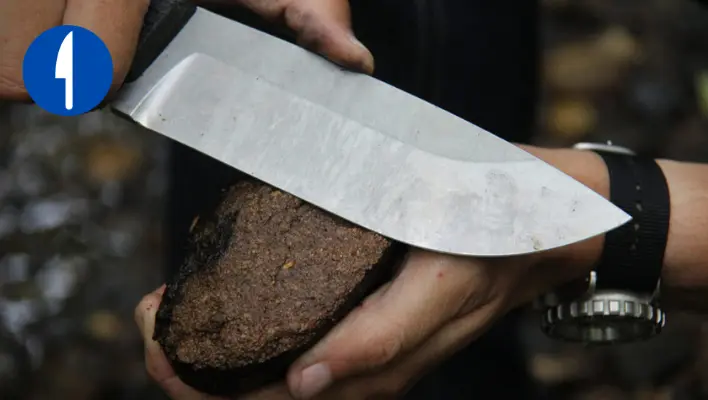
The cheapest way to sharpen your knife without a sharpener is through rocks. Both flat and round rocks would work fine but you should avoid irregular or crushed stones as they don’t have a flat surface as such. The round rock would work best and these are usually available on the riversides. But, if you can’t find one, you can use flat rocks or even a brick which is in every single one on the Earth.
Once you find a rock of any type, wash it to clean and rinse it so its surface would load some water for better workability. You need to maintain an angle of 15° and start putting strokes in order to sharpen it, here as well. Keep moving your blade and both sides one after another and stop once you find it is enough for you.
7. Stairs
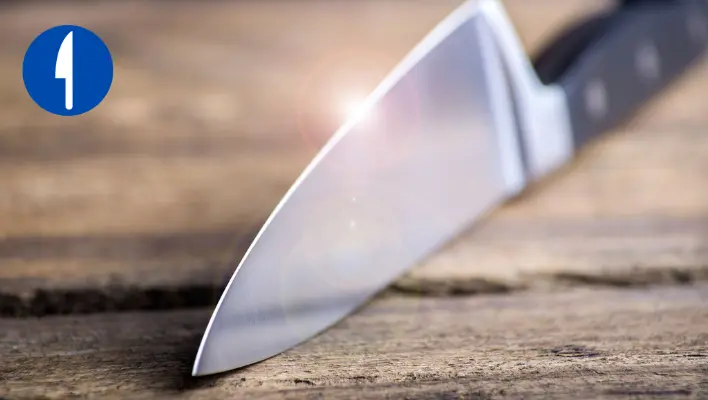
If you have nothing in your hand to sharpen your knife, the minimum you can do is to go to your concrete stairs to give your blunt knife to them and get a sharp blade in the end. Now, it’s not literally simple but you still have to put in some effort. I can bet, you must have done this in your childhood.
You can sharpen your knife on concrete stairs by maintaining an angle of up to 15°. Make sure, you don’t push your knife hard enough. Otherwise, concrete will definitely damage your knife. Obviously, it would take your time, but it is worth it for your blunt and common knives.
Wrapping Up | How To Sharpen A Knife Without A Sharpener
There is no problem if you have an easy knife sharpener next to you right now, but if you want to sharpen a dull knife, it would be good to know these methods and use them. The best way is with a good sharpener.
In the end, all these methods are just hacks and nothing else. So, if you misplaced your sharpener and you can’t find anything to sharpen your blades, these methods can work. However, not all work best but a few ones. Depending on the availability of a specific method, you can have a sharp knife in the end.
If you have a premium knife that costs you a couple of hundred bucks, you should better pick a whetstone and don’t miss these things with your knife. Or otherwise, you will regret losing an expensive knife.
Better use these methods with your common knives that you can afford to lose at some point. These methods may work for casual and home chefs, but we don’t suggest it to passionate and professional chefs to experiment on their superior blades.